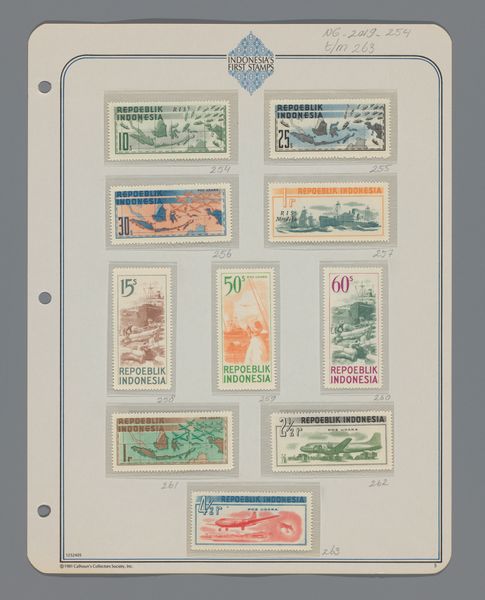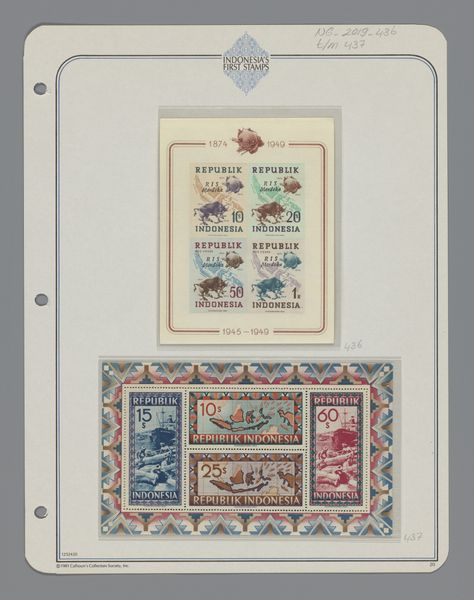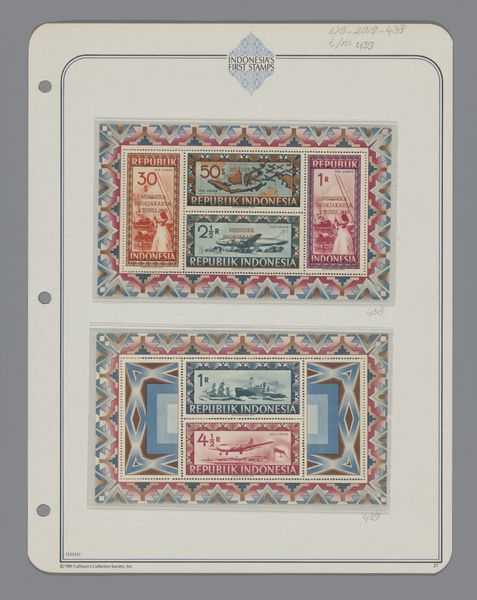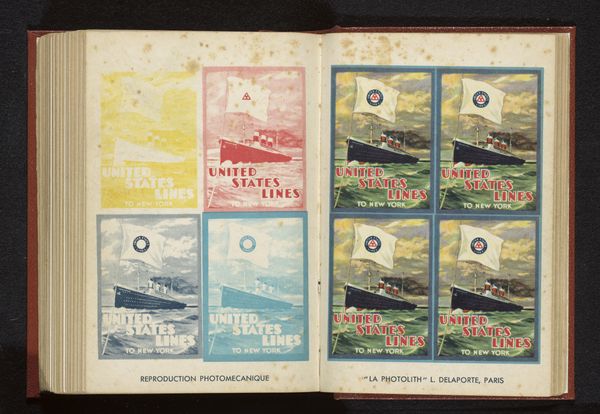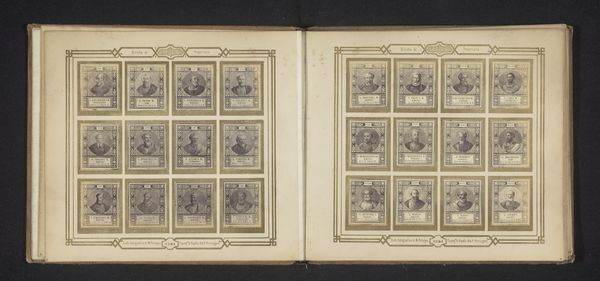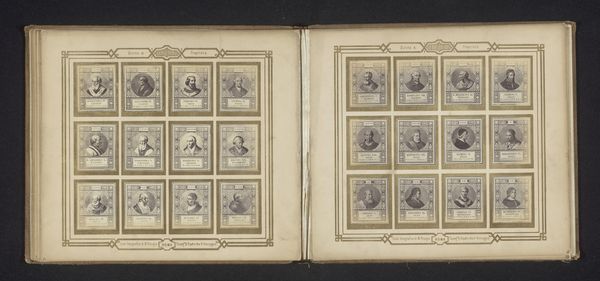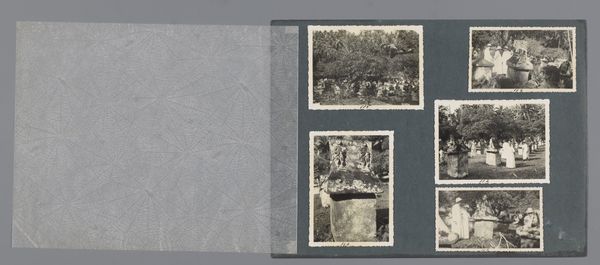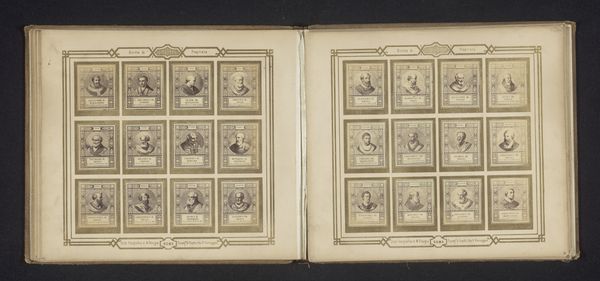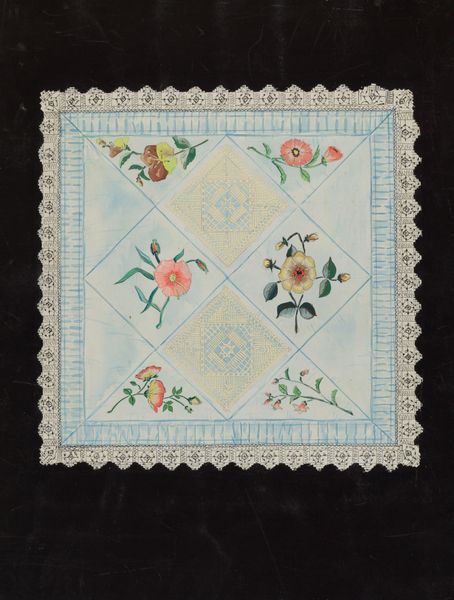
Dimensions: height 40 mm, width 30 mm
Copyright: Rijks Museum: Open Domain
Curator: So, here we have "Postzegel Republik Indonesia", stamps from 1949. A fascinating look at Indonesian identity taking shape in printed form. What jumps out at you? Editor: The colours, definitely. That muted palette—like a faded dream. Not what you'd expect from stamps, which are usually these miniature explosions of colour. It's almost apologetic, or maybe cautiously optimistic. Curator: Interesting point about expectations. These were produced shortly after Indonesia declared independence, so that optimism, or caution, is historically grounded. Consider the Staatdruckerei Wien’s involvement—the Austrian State Printing House producing stamps for a newly independent nation signals complex international relations. Editor: Ah, a European printing house. So, it's the dawn of independence filtered through a very...precise lens. It's almost… bureaucratic in its presentation. Like a carefully worded memo about freedom. Curator: Exactly. The imagery – a buffalo, an aerial map – are deliberate choices in nation-building. The buffalo, or "banteng", symbolized strength and resilience and the mapping shows the Indonesian territory to be part of it. The stamp becomes an affordable piece of propaganda in effect. Editor: Propaganda isn't usually pastel! Although, there’s a strange sincerity to it. Makes you wonder what everyday Indonesians thought when they licked the backs of these things and sent them on their way. Did they see aspiration, or just… postage? Curator: That's the magic of these objects, isn't it? These mass-produced images can also be intensely personal. To the people using them at the time, I mean. For collectors now, its value lies elsewhere. Editor: It also has me thinking about the digital realm – what new nations are being built through images in a world mediated by the Internet. It seems less romantic somehow. Less tangible. Curator: The stamp's tactility offers a valuable lesson, I think, in what endures as an official record of its moment. A carefully considered historical and cultural symbol reduced for everyday mass use. It certainly resonates today. Editor: I suppose so. And in the meantime, I find myself wanting to find a faded Indonesian travel poster now!
Comments
No comments
Be the first to comment and join the conversation on the ultimate creative platform.




